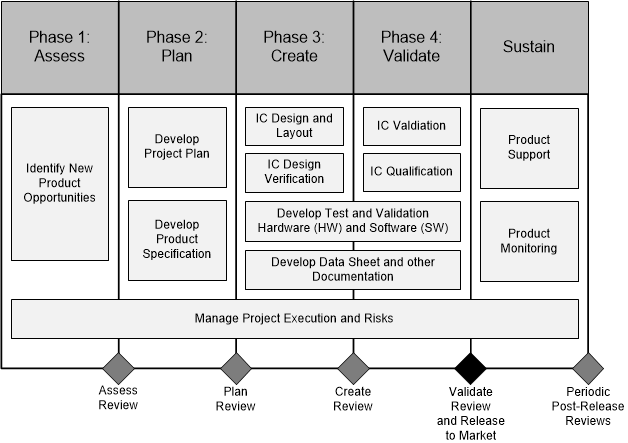SLLU312A July 2019 – May 2022 TCAN4550-Q1
- TCAN4550-Q1 Functional Safety-Manual
- Trademarks
- 1Introduction
- 2Product Functional Safety-Capability
- 3Product Overview
- 4Development Process for Management of Systematic Faults
- 5Revision History
4.1 TI New-Product Development Process
Texas Instruments has been developing mixed-signal automotive ICs for functional safety-critical and nonsafety critical automotive applications for over fifteen years. Automotive markets have strong requirements regarding quality management and product reliability. Though not explicitly developed for compliance to a functional safety standard, the TI new-product development process already featured many elements necessary to manage systematic faults.
The device was developed using TI’s new product development process which has been certified as compliant to ISO 9001 / IATF 16949 as assessed by Det Norske Veritas Certification, Inc.
The standard development process breaks development into phases:
- Assess
- Plan
- Create
- Validate
Figure 4-1 shows the standard process.
 Figure 4-1 TI New-Product Development Process
Figure 4-1 TI New-Product Development Process